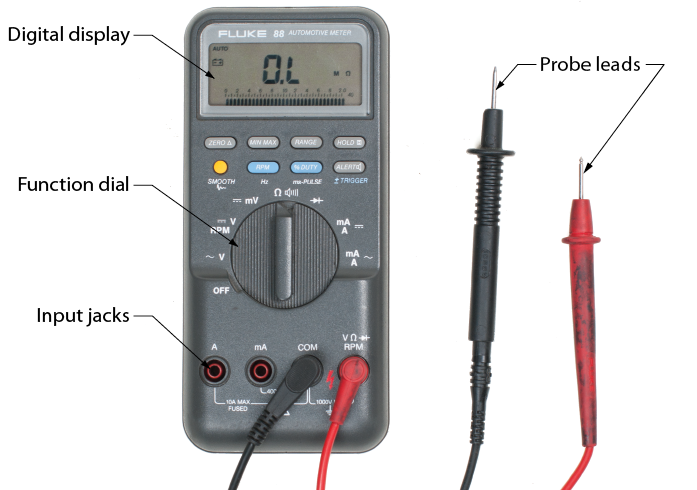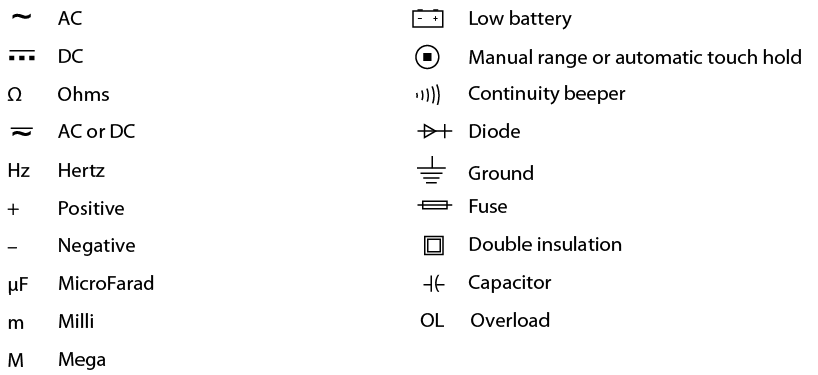9 Multimeters
Learning Task 1
Describe the use and storage of meters
A technician is only as accurate as the measurement equipment being used. If the equipment is used incorrectly or is faulty, then the measurements will be inaccurate. If the measurements are inaccurate, then the technician will draw the wrong conclusions. To avoid getting inaccurate readings, you need to handle, use, and store meters properly.
The two major types of meters are digital and analog (Figure 1). Although both meters perform the same functions, they look different. As you can see, the difference is in the display unit. Digital meters are usually simpler to use and are more accurate than analog meters, and therefore have become more popular. We will focus on the digital multimeter (DMM), as it is the most common type in use, although analog multimeters may still be preferable in some cases, for example when monitoring a rapidly varying value.

- Digital and analog multimeters
Meter safety precautions
The proper care of test equipment and instruments is of utmost importance, whether they are analog or digital. The length of time an instrument retains its original usefulness and accuracy depends largely on the care it receives in the hands of the user.
 Improper connection can cause damage to the circuit or the test instrument, or cause personal injury.
Improper connection can cause damage to the circuit or the test instrument, or cause personal injury.
Precautions in handling and using a meter
These precautions apply equally to digital and analog meters.
- Do not drop any meter.
- Do not overload any meter. When in doubt, use a high range that you know will not be overloaded. You can always switch to a lower range if necessary.
- Do not tamper with precision instruments. Let a competent instrument repair person service precision instruments.
- Before you connect a meter to a circuit, ensure that the range switch is set to an appropriate position.
- Carefully check circuit connections before applying power to meters.
- Be careful not to touch any other electronic components within the equipment.
- Be careful not to touch the probe tips to each other while connected to anything else.
Digital multimeters
All digital multimeters combine the features of an ammeter, a voltmeter, and an ohmmeter. Figure 2 shows a typical DMM, although different models may have a different number of digits in the display unit and the input/output jacks may be in slightly different places. Since a DMM is an important tool, you will want to learn how to use one correctly.

- Typical DMM
The upper portion of the DMM houses the display unit. The middle portion of the DMM houses the function switch, and the bottom portion contains the jacks for test leads.
The function switch normally has positions that will allow a technician to measure AC volts, DC volts, DC amps, and resistance. In addition, some DMMs have function switch positions that will allow a technician to measure AC amps and to test diodes and capacitors. Some DMMs require manual setting of ranges; others have an autoranging feature.
All DMMs may be used to measure voltage, current, and resistance. More advanced DMMs may measure frequency, relative power differences, or other important circuit parameters. Each measurement function has similarities and differences that you need to learn about.
- Common DMM symbols
Many meters will use symbols on the display, switch, and connections. Figure 3 lists some of the common symbols you may see.
